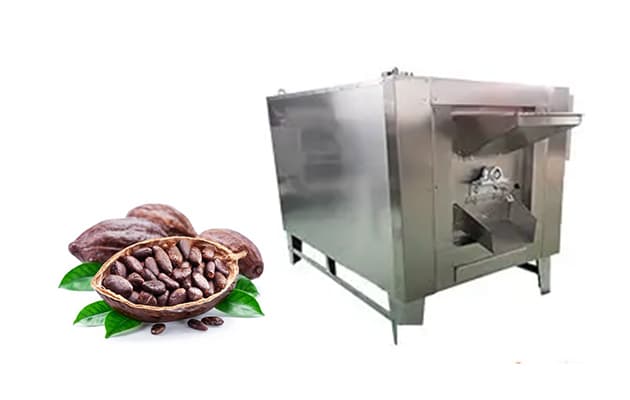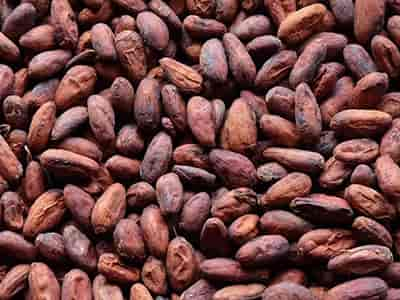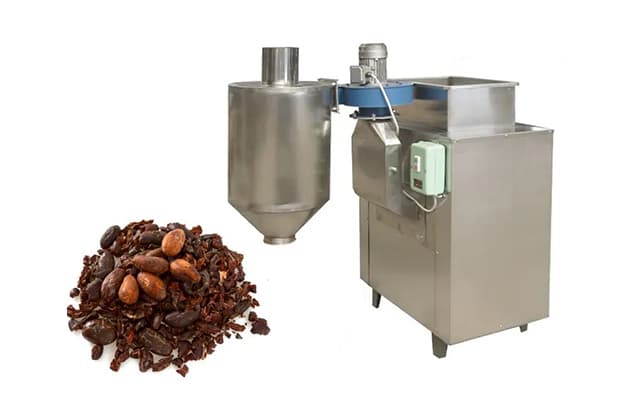Chocolate is one of the world’s most beloved foods — creamy, rich, and comforting. Yet behind every chocolate bar or cup of hot cocoa lies a fascinating ingredient that often causes confusion: the difference between cocoa va cacao. These two words sound almost identical and are frequently used interchangeably, but in the world of food science and nutrition, they represent two distinct forms of the same plant.
If you’ve ever wondered whether cacao is just a fancy way to say cocoa, or if one is healthier than the other, this article will give you a clear and complete understanding of their origins, processing methods, nutritional differences, and how they are used today.

1. The Origins of Cacao
All chocolate begins with the Theobroma cacao tree, a tropical plant native to Central and South America. The name Theobroma means “food of the gods,” a fitting title for a tree that has brought delight to humans for over 3,000 years.
The cacao tree grows best in hot, humid regions close to the equator — primarily in countries like Ghana, Côte d’Ivoire, Nigeriya, Indoneziya, Ecuador, and Brazil. These nations make up the heart of the global chocolate supply chain.
The fruit of the cacao tree is called a cacao pod, a large, colorful shell that contains 20 uchun 50 cacao beans surrounded by a sweet, white pulp. These beans are the foundation for both cacao and cocoa products.
2. A Brief History: From Ancient Drink to Global Delight
Long before chocolate became a dessert, it was a sacred beverage. The ancient Maya and Aztec civilizations used cacao beans to prepare a bitter, spiced drink called xocoatl, often flavored with chili and honey. It was consumed by priests and royalty during rituals, symbolizing power and vitality.
When Spanish explorers brought cacao to Europe in the 16th century, sugar and milk were added to make it sweeter and more palatable. Vaqt o'tishi bilan, technological advances transformed the way cacao was processed — leading to the roasted and powdered form we now know as cocoa.
Shunday qilib, cacao is the asl, raw form, while cocoa is the processed, roasted version that became the basis for modern chocolate.
3. The Key Difference: Processing Method
At its core, the distinction between cocoa and cacao lies in how the beans are processed after harvest. Both begin as cacao beans, but their journey diverges depending on temperature and technique.
3.1. From Pod to Bean: The Starting Point
Once cacao pods are harvested, they are cut open, and the beans are removed along with their surrounding pulp. These beans are then fermented for several days. Fermentation is a critical step that develops the flavor precursors of chocolate. After fermentation, the beans are dried under the sun to reduce moisture content.
At this stage, the product is still referred to as cacao beans.
3.2. Cacao: The Raw Form
The term cacao usually refers to the raw or minimally processed version of the bean. Cacao products are made by cold-pressing unroasted cacao beans. This gentle process separates the fat (cacao butter) from the solids (cacao powder) while preserving most of the natural enzymes, antioxidants, and nutrients.
Because it is not roasted, cacao retains its bitter flavor va dark color, as well as a higher concentration of polyphenols and magnesium. It’s popular in health food circles and is often used in raw desserts, silliqlash, and energy bars.
qisqa bayoni; yakunida:
- Cacao = Raw, unroasted, nutrient-rich form of the bean.
- It’s processed at low temperatures to keep the enzymes alive.
3.3. Cocoa: The Processed Form
Cocoa, on the other hand, refers to roasted cacao beans that have undergone higher-temperature processing. The roasting process — typically between 120°C and 150°C — gives cocoa its rich, chocolatey flavor and deep brown color. Roasting also reduces bitterness, making it more pleasant for mass-market chocolate products.
Qovurilgandan keyin, the beans are cracked and winnowed to remove the shells, leaving behind the inner cocoa nibs. These nibs are ground into a thick paste called kakao likyor (also known as chocolate liquor, though it contains no alcohol). The cocoa liquor can be further separated into cocoa butter va Kakao kukuni.
qisqa bayoni; yakunida:
- Cocoa = Roasted, processed version used in chocolate and baking.
- It has less bitterness and a smoother flavor profile.

4. Chemical and Nutritional Differences
Processing changes not just the flavor but also the chemical composition of the product. Heat destroys some antioxidants and vitamins but also enhances certain flavor molecules that make cocoa taste like chocolate.
| Nutrient / Property | Cacao (Raw) | Cocoa (Processed) |
|---|---|---|
| Processing temperature | < 45°C | 120–150°C |
| Antioxidant content | Very high | Mo''tadil |
| Magnesium | Baland | Lower |
| Flavonoids | Largely preserved | Partially lost |
| Caffeine & theobromine | Baland | Slightly reduced |
| Flavor | Bitter, earthy | Silliq, sweet, rich |
| Common uses | Sog'liqni saqlash uchun ovqat, silliqlash | Chocolate, pishiriqlar, drinks |
Cacao is considered a “superfood” because it contains high levels of antioxidants, especially flavonoids, which are known to improve blood flow and heart health. Cocoa, while less nutrient-dense, still contains beneficial compounds and is more suitable for large-scale food production.
5. Flavor and Culinary Uses
The difference in flavor between cacao and cocoa is quite noticeable.
- Cacao has a raw, bitter, earthy taste — similar to dark chocolate but more intense. It’s often used by health enthusiasts in smoothies, energy balls, or raw desserts.
- Cocoa is sweeter and smoother, with the familiar chocolate taste most people love. It dissolves easily in milk or water, making it perfect for baking and beverages.
Umumiy foydalanish:
Cacao:
- Raw chocolate bars
- Energy bites
- Vegan desserts
- Smoothies and protein shakes
Cocoa:
- Chocolate cakes, brownies, and cookies
- Hot cocoa drinks
- Chocolate bars and confectionery
- Ice cream flavoring

6. Health Benefits: Cacao vs. Cocoa
Both cacao and cocoa offer health benefits, though cacao generally retains more due to its minimal processing.
6.1. Benefits of Cacao
- Rich in antioxidants – Helps fight free radicals and reduce inflammation.
- High in magnesium – Supports muscle and nerve function.
- Mood booster – Contains phenylethylamine (PEA), which promotes happiness.
- Supports heart health – Flavonoids improve blood circulation.
- Low in sugar – Often used in raw or unsweetened products.
6.2. Benefits of Cocoa
- Contains mood-enhancing compounds like theobromine and serotonin precursors.
- Easier to digest due to roasting.
- More versatile in cooking — can be used in a wide range of sweet recipes.
- Still nutritious, though less potent than raw cacao.
In short, if you’re seeking nutritional power, cacao is the better option. But if you’re after flavor and versatility, cocoa wins.
7. From Farm to Factory: The Cocoa Production Chain
The transformation from cacao bean to cocoa powder is a sophisticated process involving several stages. Modern factories use specialized cocoa processing machinery to ensure consistency, gigiena, va sifat.
The typical industrial process includes:
- Cleaning and Sorting – Removing impurities from the beans.
- Qovurish – Developing the aroma and flavor.
- Cracking and Winnowing – Separating nibs from shells.
- Silliqlash – Turning nibs into cocoa liquor.
- Bosmoq – Extracting cocoa butter from liquor.
- Cooling and Milling – Turning the remaining solids into cocoa powder.
- Qadoqlash – Ensuring freshness and food safety.
Each of these steps affects the final product’s taste, rang, va tuzilish. Precise control over temperature and pressure is essential to maintaining quality — which is why industrial-grade cocoa processing equipment is used worldwide.

8. Environmental and Ethical Considerations
Cacao farming supports millions of smallholder farmers across tropical regions. Biroq, it also faces challenges such as deforestation, child labor, va price instability. Sustainable certifications like Fairtrade, Rainforest Alliance, va UTZ aim to ensure ethical sourcing and better income for farmers.
Cacao trees are also sensitive to climate change — they require stable rainfall and temperature conditions. As global temperatures rise, sustainable farming practices are becoming increasingly important to protect the future of chocolate production.
Consumers today are more aware of these issues and often prefer products labeled as ethically sourced cacao yoki sustainable cocoa.
9. Fun Facts About Cocoa and Cacao
- Cacao beans were once used as currency by the Aztecs.
- The word “chocolate” comes from the Nahuatl word xocoatl, meaning “bitter water.”
- Dark chocolate contains more cacao solids, while milk chocolate contains more cocoa butter and sugar.
- White chocolate technically isn’t chocolate at all — it contains cocoa butter but no cocoa solids.
- A single cacao tree produces about 2,500 beans per year.
10. How to Choose Between Cocoa and Cacao
When shopping for chocolate or cocoa products, the choice depends on your goal:
| Maqsad | Choose Cacao If… | Choose Cocoa If… |
|---|---|---|
| Ovqatlanish | You want maximum antioxidants and minerals. | You prefer a moderate nutrient level. |
| Flavor | You enjoy bitter, earthy tones. | You want smooth, sweet chocolate flavor. |
| Pishirish | You’re making raw desserts or health foods. | You’re baking or making drinks. |
| Narx | You don’t mind paying more for quality. | You need an affordable, easy-to-use option. |
In essence, cacao is nature’s version, vaqt cocoa is humanity’s perfected form for mass enjoyment.
11. The Science of Flavor: Why Roasting Matters
Roasting cacao beans triggers the Maillard reaction, a chemical process that creates hundreds of new flavor compounds. This is what gives cocoa its complex, rich aroma reminiscent of caramel, yong'oq, and coffee.
The duration and temperature of roasting greatly influence the final product:
- Low roast (110–120°C) → retains more acidity and fruity notes.
- Medium roast (130–140°C) → balanced chocolate flavor.
- High roast (150°C+) → darker color, deeper aroma, slightly bitter.
This step also reduces moisture and microbial load, improving shelf life and safety.
12. Modern Uses and Global Demand
Cocoa and cacao are not limited to chocolate bars anymore. They are now used in:
- Nutritional supplements and protein powders
- Dairy and non-dairy beverages
- Ice creams, biscuits, and confectionery
- Cosmetics (using cocoa butter)
- Pharmaceuticals and nutraceuticals
Global cocoa and chocolate market exceeds USD 130 milliard, and demand for premium cacao products is growing, especially in North America and Europe. Consumers are increasingly drawn to “raw,” “organic,” and “superfood” labels — pushing the industry toward more transparent processing methods.
13. Summary: Cocoa vs. Cacao
Let’s recap the essential differences between these two chocolate bases:
| Aspect | Cacao | Cocoa |
|---|---|---|
| Kelib chiqishi | Raw cacao beans | Roasted cacao beans |
| Processing | Cold-pressed, unroasted | High-temperature roasted |
| Nutrients | Higher antioxidants and magnesium | Fewer nutrients |
| Flavor | Bitter, earthy | Sweet, smooth, rich |
| Foydalanish | Health foods, raw products | Pishirish, shokolad, beverages |
| Color | Dark brown | Light to deep brown |
| Yaroqlilik muddati | Shorter | Longer |
| Popularity | Among health-conscious consumers | Among mainstream food manufacturers |
Both cacao and cocoa have their place in our diets and industry. One emphasizes natural health, the other emphasizes indulgent pleasure — together, they complete the world of chocolate.
14. Falie kakao va kakaoning farqi nimada?
Shunday qilib, what is the difference between cocoa va cacao?
The answer lies in cocoa qayta ishlash — cacao is the raw, nutrient-rich form, while cocoa is the roasted, refined version that gives us the flavor we associate with chocolate.
Cacao celebrates purity, preserving nature’s original gifts of antioxidants and minerals. Cocoa celebrates craftsmanship, transforming those beans into delicious products that bring joy to millions.
Whether you sip a cup of hot cocoa or sprinkle cacao nibs on your smoothie bowl, you’re enjoying the fruits of the same tree — Theobroma cacao, the “food of the gods.”
And that, perhaps, is the sweetest part of the story.
